#plants of iowa
Explore tagged Tumblr posts
Text









Carnival/Fair Food At Home
Corn Dogs
Funnel Cake
Philly Cheesesteak
Fried Oreos
Chili Cheese Fries
Homemade Dole Whip
Lemonade
Churros
Mac And Cheese Bites
#state fair#Ekka#carnival#fair ground#Ferris wheel#county fair#america#United States#Americana#amusement park#theme park#corn dogs#Dagwood dogs#pluto pups#Melbourne Royal Show#iowa state fair#texas state fair#Minnesota State Fair#funnel cake#food#vegan#veganism#plantbased#plant based#recipe#recipes#foodporn#food porn#food photography#food pics
105 notes
·
View notes
Text

Merry Christmas and happy holidays to you and yours!
Photo taken: Iowa- Dec 8, 2009
29 notes
·
View notes
Text


iowa corn & iowa beans - holga 135 & 400 speed color film - developed at bergen photo & scanned with minolta dimage dual iii
#farm#field#35mm#green#cloudy#landscape#prairie#great plains#midwest#iowa#americana#film#film photography#35mm photography#ishootfilm#photography#lensblr#plants#agriculture#farming
197 notes
·
View notes
Text



Kenue Park in Dickinson County, Iowa.
The first and third photos are of whorled milkweed (Asclepias verticillata) at the top of a sandy, rocky hill.
The second photo is a low-lying prairie that was completely covered with grey-headed coneflowers (Ratibida pinnata).
28 notes
·
View notes
Text

We western hippies have become a rare breed.
Western Prairie Fringed Orchid (Platanthera praeclara)
Midwest Canada and USA, from Manitoba to Kansas
Status: Endangered
#plant#flower#orchid#wildflower#prairie#botanical art#botany#flower art#north america#usa#canada#manitoba#north dakota#minnesota#iowa#kansas#missouri#nebraska
20 notes
·
View notes
Text
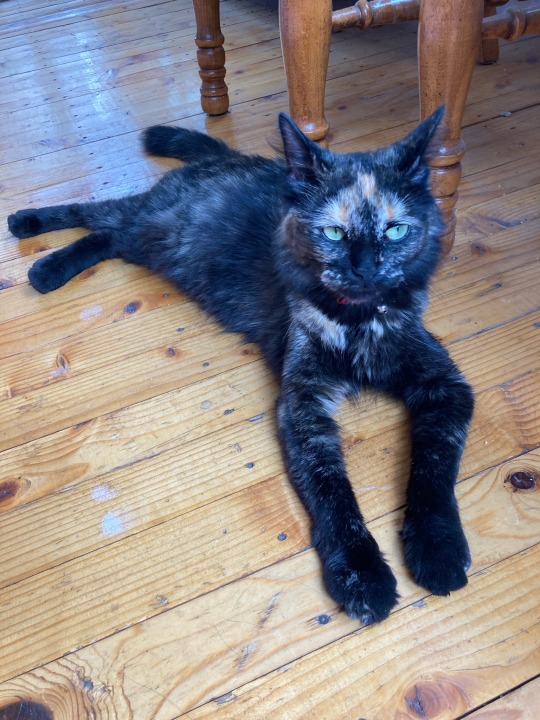
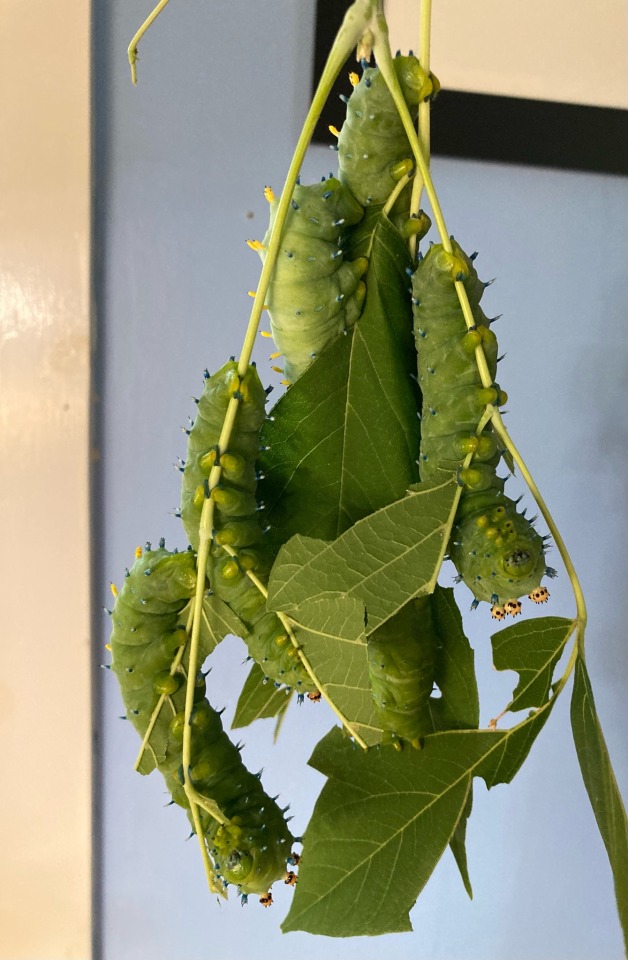
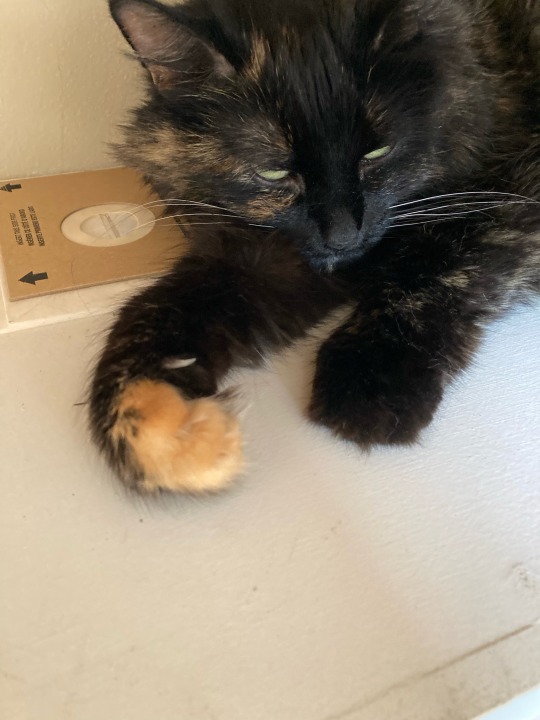


I can’t believe I’ll be on my way to see mountains and giant trees via a train (Sequoia/kings canyon National park) in less than a day, but I’m already missing some things at home. They’re in good hands though!
New kitty Frida had her vet appointment yesterday and did great. Double cat drama can resume post vacation. Wish me luck, and I will return with big tree memories in September!
#cats#tortie#tortoiseshell#plants#houseplant#Hoya#Hoya pubicalyx royal Hawaiian purple#she finally made me a bloom and it’s beautiful!#Hoya ganung gading#still crossing my fingers both cats can coexist because I’m disproportionately attached to Frida#my big fish tank light timer crapped out before we left and I had to replace it#took enough time and annoyance just to get down to iowa with roads being out and we aren’t even to the train yet#fingers crossed all goes smoothly!#and if it doesn’t that I don’t have any kind of meltdown#caterpillar#cecropia caterpillars#bugs#insect#all safe in cocoons I’m so proud
117 notes
·
View notes
Text
we are getting a dog (my very first!!!!) in the next couple of days and it’s still too early to tell but. i just may have performed my single greatest and most masterful (and loving) manipulation thus far in that, entirely unbeknownst to mr lune, any name we choose for her will be marauders-related >:)
#we are waiting to see if we will change her given name once we meet her bc it’s actually the name of Mr Lune’s beloved childhood dog#that was his soulmate#so it all felt very serendipitous. but he hasn’t decided if he wants to change it yet#and i cannot stress enough how many months in advance i started planting the seeds. and it has all come together mwahaha >:)#also i love him and this is all in good fun in case anyone needed to hear that!!!!!<3#i am so excited to meet her raaaahhhhh :’)#she is coming all the way from iowa!!! (far)#anyway. i am being chatty on here tonight cue my embarrassment at being perceived and u will prob see me in 3-5 business days
3 notes
·
View notes
Text
Can some tumblr witches who live somewhere where yellow toadflax is good luck come and scour my garden for all the toadflax so I don't have to spend the rest of five years fighting this shit?
It's bad luck here because it outcompetes my cherry tomatillos and even though idk if they're edible (adjacent heavy landscaping) they are still extremely cute and I love them and I hate toadflax
#tumblr witches#toadflax#gardening#its okay to come to iowa as long as you leave#the seeds are good luck if you live in like wales or something#you can boil yellow toadflax in milk to make insecticide#but here its just a shitty plant that turns your gardenbed back into a grass lawn#the flowers are super cute but smell like piss
32 notes
·
View notes
Note
Hey do you happen to know of any resources for someone in Iowa looking to get into native plant gardening? Thanks in advance! (Love your blog btw)
*cracks knuckles* sorry for keeping you hanging since November 3rd, homie, but I'm back home and down to get started!
Before I do, a special reminder that I'm not based in Iowa! I don't think I've ever even set foot in Iowa. I'm a Florida girlie lol. However, I will do my best to give you my advice and find some resources for you!
In my experience, many native plants grow slowly from seed. This could be because I mostly prefer perennials (I am way too lazy to replace an annual every year), but they can take awhile to germinate and an even longer while to size up. I've gotten seeds that say to wait upwards of 3 weeks to see any germination, and that's often after waiting a month or more for proper cold stratification! All of this is just to say--you gotta have a bit of patience when it comes to all gardening, but especially with native plants!
If you can get your hands on some seeds now, they'll likely need cold stratification. Fortunately, cold stratification is happening right now--put the seeds where you want them to grow, and let chilly winters do the work for you! Needing cold stratification basically means the plant has evolved to know it needs to wait until after winter to start germinating, so as things warm back up in spring, your seeds'll start growing!
Once they start growing and get established, they'll really start going--if they're in their perfect conditions, they'll be more than ready to take over a bit and manage on their own! Keep an eye out for watering needs, but generally I find native plants don't need much when it comes to fertilizer and pesticides. If you don't want things to spread a lot, you can always choose to grow certain plants in pots instead--or if you're really determined to grow a plant your soil isn't quite right for, a pot does wonders. My soil isn't very moist, so I grow a good chunk of my swamp milkweeds in pots to keep a better eye on their care.
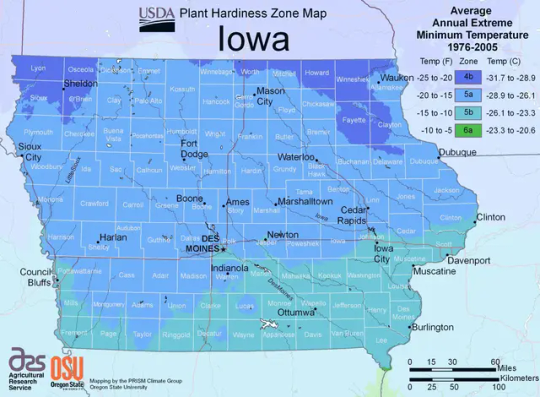
Iowa's got a handful of growing zones going on, so knowing what the zone for your region is will help you pick the best plants! You can also pick plants known to have grown historically well in your region--I've seen plant range maps break things down by counties for my state, which helps give a good idea of whether it's a good idea for me to grow something touted as a native to my state. It's entirely possible for something to be native to your state, but not your half of the state, for example!
Browsing through a couple of sites, I hope these'll be helpful to you!
This is a link to Iowa Native Plants, which has a nice primer on the importance of native gardening as well as a few guides to native plants in their Finder tab! They also seem to sell a hanfdul of books on native gardening that may be an interesting read for you!
My Home Park appears to have a lot of information on native plants, and sells native plants that can be shipped to your state! I can't say I've ever had a plant shipped to me before, let alone from them (they don't service my state) but it could be worth a shot! If anything else, could be a good source of information! They also have a blog, and a feature that lets you mock up a garden to see what it'd look like (I didn't try it though). They also seem to service North Dakota, South Dakota, Nebraska, Kansas, Minnesota, Missouri, Wisconsin, Michigan, Illinois, Indiana, Kentucky, Tennessee, Ohio, West Virginia, Virginia, Pennsylvania, Maryland, Delaware, New Jersey, New York, Connecticut, Massachusetts, Vermont, New Hampshire, Rhode Island, and Maine.
The Tallgrass Prairie Center links to a ton of resources on learning about native plants, planting them, landowner incentive programs, and organizations you can join that are full of others who are passionate about native plants! The Tallgrass Prairie Center itself aims to establish and protect native plants, restore ecosystems, and increase awareness and appreciation of the Tallgrass Prairie Ecosystem. I think their site's definitely worth a look-through, or you can use it as a bouncing off point to find other sites full of info!
The Iowa Native Plant Society is a nonprofit organization full of people who are enthusiastic about native plants! They host field trips, workshops, have a newsletter, and more! It could be a fun way to learn more about native ecosystems on their trips, and if they're anything like the native plant society for my state, the calendar on their site will probably start lighting up with different chapters' native plant sales as we get closer to spring, so keep an eye out! They've also got books and lots of resource links on their site!
Oftentimes when I look up information on how to grow a particular plant in my state, the university extensions office is one of the best resources. As such, I think the Iowa State University's Extension and Outreach website is likely to have some good info for you about gardening! I've also in the past emailed some staff from various offices questions about native gardening and gotten good answers, so they're definitely a resource to be utilized!
I almost forgot to link the Xerces Society! The Xerces Society for Invertebrate Conservation has a primary focus of protecting insects in the US, but that often goes hand in hand with native plants, so they're a great resource for learning about plants and the insects that rely on them! Especially helpful is their Pollinator Conservation Resource Center, which has lists of plants and suppliers by region! You can also find just their plant lists here!
Speaking of plant lists, The National Wildlife Federation has a list of keystone plants by ecoregion! Keystone plants are highly important, as they're vital to the lifecycle of many species of insect, which then help feed birds and other creatures--you get the picture. I used the National Wildife Federation a good bit when I was writing my Biodiversity Saga on increasing biodiversity in your yard/on your balcony/in your area on a budget.
iNaturalist is a fantastic website for cataloguing the cool insects you find in your new native garden, as well as learning about the variety of plants, animals, insects, etc. that are in your area! Make an account and just vibe around!
Books can be a great resource! Unfortunately, my attention span is frequently lacking when it comes to books, and I definitely haven't read any that focus on Iowa's native flora. However! I've got a few general books that are nice reads, so you can definitely see if you can find these in a library or online (I'm including Thriftbooks links because fuck Amazon).
Hellstrip Gardening by Evelyn J. Hadden is a book I read last month that honestly inspired so many new projects out of me that next year is gonna be busy. Might as well get a healthy dose of inspiration now so you can do some planning and be roaring and ready to go come spring! I liveblogged it on my gardening blog, and shared some of my favorite notes as well!
Attracting Native Pollinators by the Xerces Society is a book that offers a generalized view on why its important, ways you can utilize native plants at any scale from swaths of farmland to a school garden or a small yard, and provides lists of plants that can be good for your region near the end! They also have Gardening for Butterflies, which I honestly haven't read yet, but I checked it out from the library so Mayhaps Soon. PS: you can buy Attracting Native Pollinators and Gardening for Butterflies from the Xerces site directly, and support their work! However. Hoo buddy, the pricing.
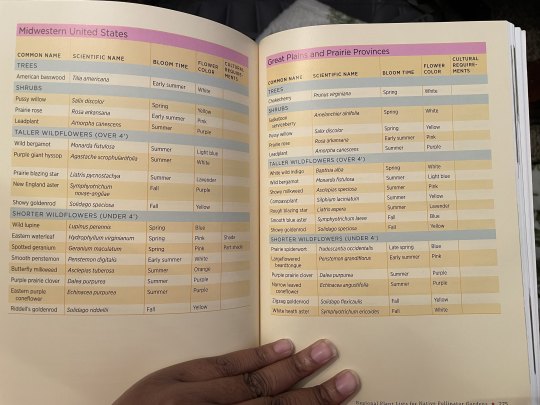
(Psst, here's the plant list from Attracting Native Pollinators, don't tell Xerces)
My final message to you, young padawan, is to grow milkweed. If there's a milkweed native to your state, grow it. If there's several native to your region, grow a ton of it. Milkweed is the host plant for Monarchs, but it's also such a high-value nectar source for so many other insects you've just gotta try and grow some in my book. Also a lot of the sites I saw for your state had pictures of blazing star and black eyed susans and let me tell you. Plant those. You'll have so many happy pollinators.
I can't think of anything else. If any Iowa gardeners wanna chime in with their favorite resources and such, feel free to!
#gardening#iowa#native plants#native gardening#outdoor gardening#resources#out of queue#ani rambles#answered asks#anonymous#ok time to eat something today peace out byeeeee
31 notes
·
View notes
Text
Long time no post but I had so much fun this weekend at Anime Iowa esp as Tristamp Vash on Friday and Saturday night!!
LOVE & PEACE ✌️
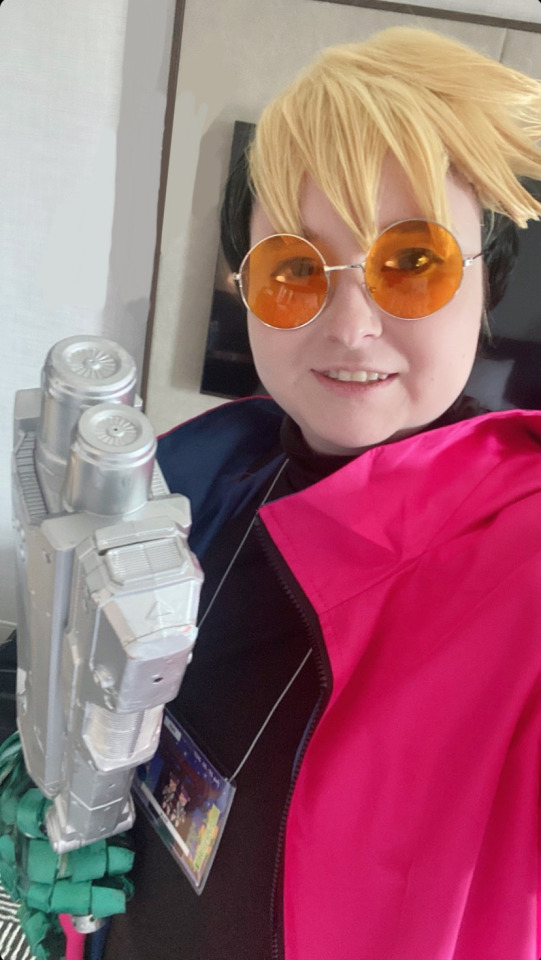

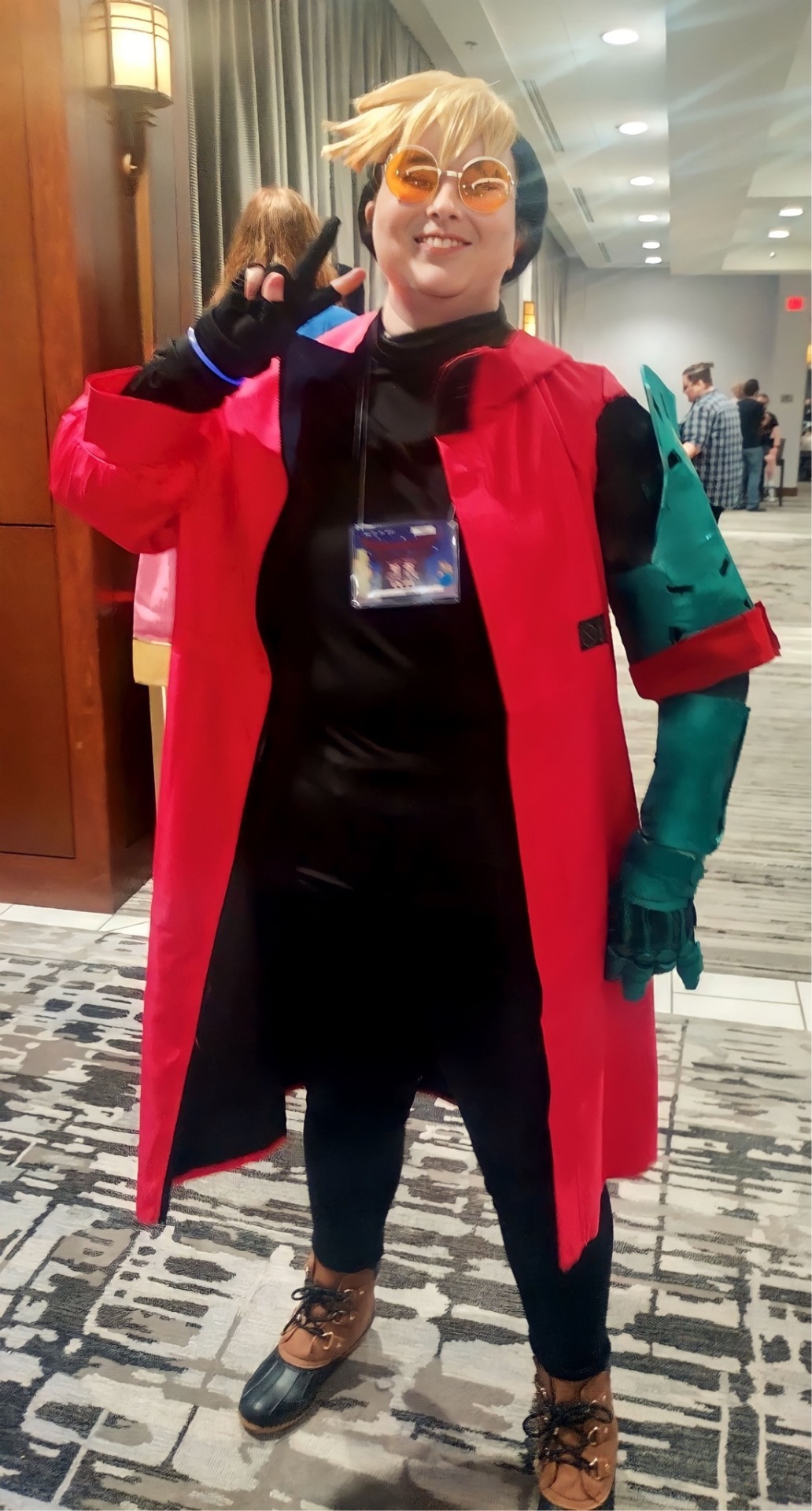
#vash cosplay#vash the stampede#vash the stampede cosplay#trigun#trigun stampede#tristamp#trigun cosplay#tristamp cosplay#tristamp vash#tristamp vash cosplay#he makes me so happy!!!!#cosplaying Vash gives me gender euphoria#cosplay#my little plant boy#anime iowa#anime iowa 2023#trans vash#trans cosplayer#edit: I forgot the 🤞 emoji existed nooo 😭
25 notes
·
View notes
Text
The upper midwest is flooding while most of the rest of the continental us is under a record setting heat dome. Do you think some people around here (my coworkers specifically) might start believing in climate change now?
#crap#northwest iowa is drowning and theres so much water it caused a dam failure in Minnesota#bridges are collapsing towns are flooding roads are washing away 100 year flood records are being broken across the region#also i was listening to an agronomist podcast because thats what i do now that i work in an ethanol plant#and they were saying 40% or more of the crops are lost already#btw i know the answer and it is no#theyll tell you its normal cyclical weather patterns because they want to believe everything is fine and normal
4 notes
·
View notes
Text
thinking abt the horror inherent to cornfields again. maybe I’m just british and have never seen cornfields (I know we DO grow it over here but I haven’t like. seen it) but the thought of an annual crop plant growing THAT TALL (average 2.5m/8ft) for us to just eat the grain feels viscerally wrong. wheat is like 1.2m/4ft you can exist in a wheat field but corn will swallow you whole
#this post brought to you by guy from wheat/potato/rapeseed farming area#I’m also pretty sure this has been said many many times but when I hear abt cornfields it’s normally joking abt like. is it iowa#or whatever just them being big#which yeah itself is fucking terrifying but god like corn is a Big Plant#ohhhhhh this is tapping into childhood memory I just realised. I might be making this up and it’s from smth else but#watership down when they’re in the field with the tractor? or maybe just hiding in a massive field?#but they’re rabbits so the plants are obviously Kinda Big#anyway cornfields are a monument to man’s hubris. we’ve taken this crop (which I will say was not meant to be grown like this)#that is significantly bigger than us and put them in nice evenly spaced rows for miles and miles#we grew a grass forest to eat but it Does Not Care About You. you are insignificant to the corn.#i do Not have the words to do this justice and again I have never seen cornfield this is all second hand but.#it’s all just so alien#I wonder what fairy stories we would’ve gotten about cornfields if they’d been around back then#this concludes cornposting hours.#luke.txt
2 notes
·
View notes
Note
A very impolite question: why can’t you exactly explain where you’re from? 🤔
I get this question all of the time because people try to pin down my accent sometimes and it's hard cause it changes ever so slightly so I don't find this question rude at all.
I moved around a lot as a kid and that kind of followed me into adulthood. The easiest answer is that I'm from Maryland because that's where I spent most of my life but a version of the long answer is:
Born - Colorado Early childhood - Iowa/Texas/Maryland Middle School/High School - Maryland College - Oklahoma (this is where I picked up the southern accent)
I've lived in more places since then but I'll spare you my adulthood moving around because I'm still recovering from all of my recent moves. I've landed pretty nicely in the Chicago area and I'm not planning on leaving any time soon. I like it here. I like my job, I like the people, I like my life here. So if you or anyone else is in the Chicago area, feel free to hit me up to go grab coffee or drinks or something!
#rae irl#my older brother and i moved around more than our younger siblings but my brother can very easily say maryland because he never left#after we moved to maryland that is where he stayed and planted his roots#my younger siblings can say maryland or oklahoma though neither of them stayed in either place#and my youngest sibling would probably say oklahoma#my younger sister is more like me but i think she says maryland more than anything else because she misses it#my dad would say iowa#i think my mom would either say colorado or iowa i'm not entirely sure#it would depend on her mood and the context of the conversation#we're kind of nomadic i guess now that i'm looking at it written out#i'm hoping after college my youngest sibling moves to chicagoland so we can be together
3 notes
·
View notes
Text
I work in conservation in Iowa, and here there’s only .1% of prairie habitat remaining. every scrap left has to be fought for by conservationists, and you have to seek it out to be able to see it, and it makes me so sad because I cannot put into words the incredible beauty of a true prairie
I’ve seen mountains, I’ve seen the ocean, I’ve been to Hawaii and Yellowstone and the glaciers in Alaska, and I’ll take an oaken savannah in bloom over any of them
I hope everyone understands, when I say “most endangered habitat on earth”, I mean temperate grasslands.
They’re more endangered than tropical rainforests, coral reefs, the arctic tundra, all of those go-to environments that get more of the spotlight.
Where I live, maybe 25% of the prairie remains in a natural state and that number is dropping. Even these fragments are mostly missing the keystone species that maintain their health, like bison, wolves, and prairie dogs. I know this is the case for other grasslands like the pampas and steppe as well. Vast lands empty of many species that used to call them home.
If you live on temperate grasslands, hold onto them tight, because they’ve been exploited like no other land and most people don’t even know how far the devastation goes.
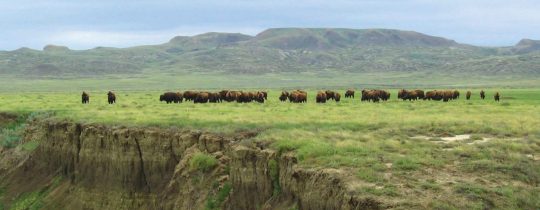
#I could talk about conserving prairie habitat for hours#we have such amazing animals and beautiful plants#and they make the soil better and the air and water cleaner#and people don’t care because it’s not mountains or ocean or approved by their HOA#no one is going to drain a mountain lake just to put in an Amazon warehouse#but an Iowa marsh?#with unfathomable biodiversity that functions as a pollutant sink?#who cares!!!#it doesn’t fit our commercial standard of natural beauty#and that means that it’s perfectly acceptable to tear it out and kill it right?!#rage and flames and explosions against industrialization
36K notes
·
View notes


